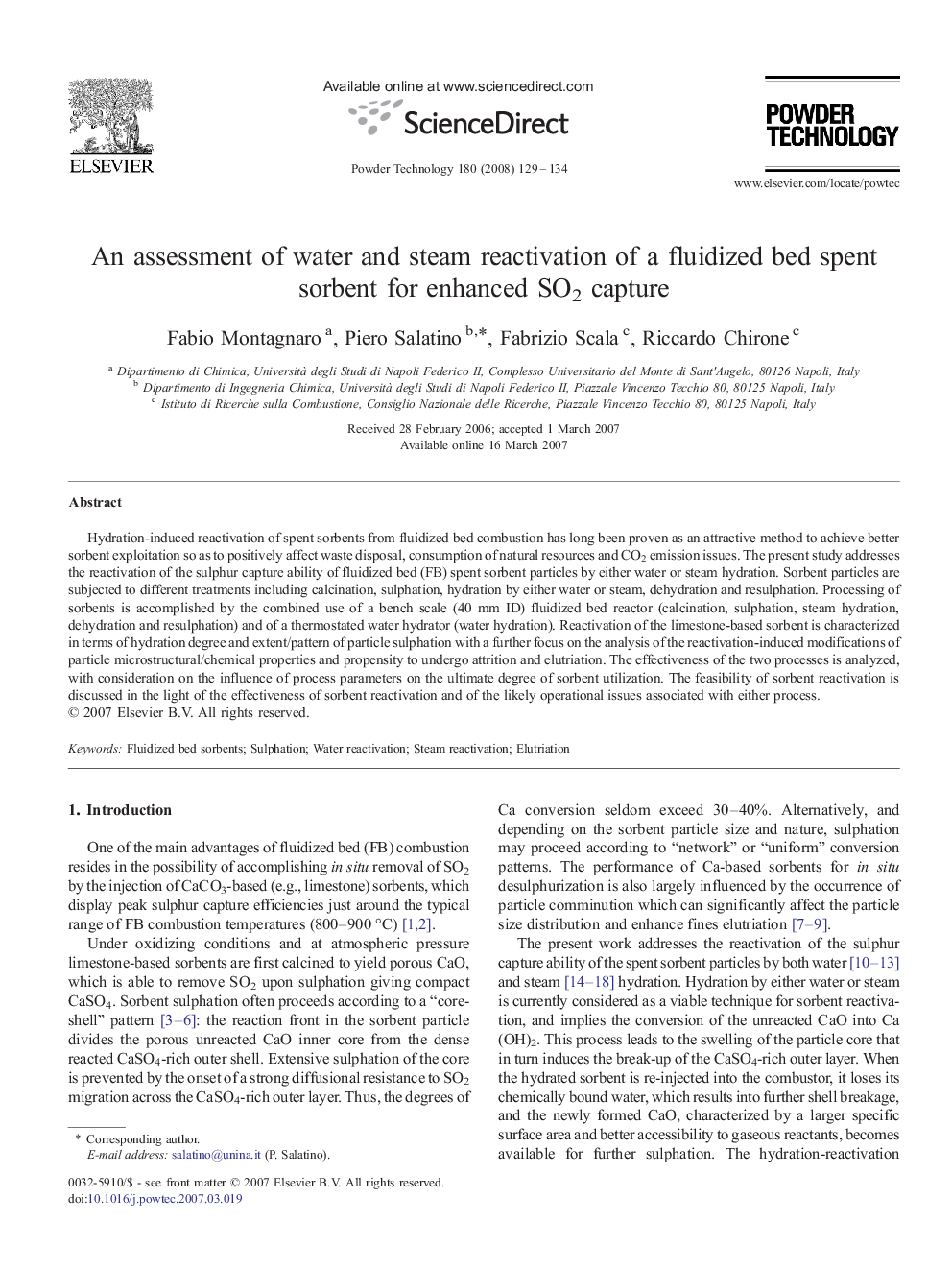| Article ID | Journal | Published Year | Pages | File Type |
|---|---|---|---|---|
| 238735 | Powder Technology | 2008 | 6 Pages |
Hydration-induced reactivation of spent sorbents from fluidized bed combustion has long been proven as an attractive method to achieve better sorbent exploitation so as to positively affect waste disposal, consumption of natural resources and CO2 emission issues. The present study addresses the reactivation of the sulphur capture ability of fluidized bed (FB) spent sorbent particles by either water or steam hydration. Sorbent particles are subjected to different treatments including calcination, sulphation, hydration by either water or steam, dehydration and resulphation. Processing of sorbents is accomplished by the combined use of a bench scale (40 mm ID) fluidized bed reactor (calcination, sulphation, steam hydration, dehydration and resulphation) and of a thermostated water hydrator (water hydration). Reactivation of the limestone-based sorbent is characterized in terms of hydration degree and extent/pattern of particle sulphation with a further focus on the analysis of the reactivation-induced modifications of particle microstructural/chemical properties and propensity to undergo attrition and elutriation. The effectiveness of the two processes is analyzed, with consideration on the influence of process parameters on the ultimate degree of sorbent utilization. The feasibility of sorbent reactivation is discussed in the light of the effectiveness of sorbent reactivation and of the likely operational issues associated with either process.
Graphical abstractThe effectiveness of hydration-induced reactivation of spent sorbents from fluidized bed combustion has been assessed. Sorbent particles have been subjected to different treatments including calcination, sulphation, hydration by either water or steam, dehydration and re-sulphation. Hydration degree, sulphation extent/pattern, reactivation-induced modifications of particle microstructural and chemical properties and propensity to undergo attrition have been characterized.Figure optionsDownload full-size imageDownload as PowerPoint slide
